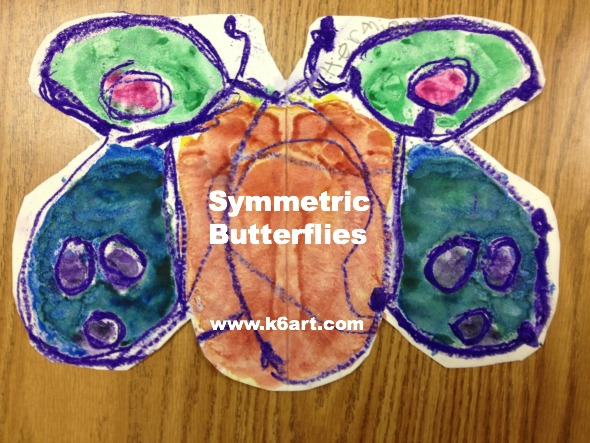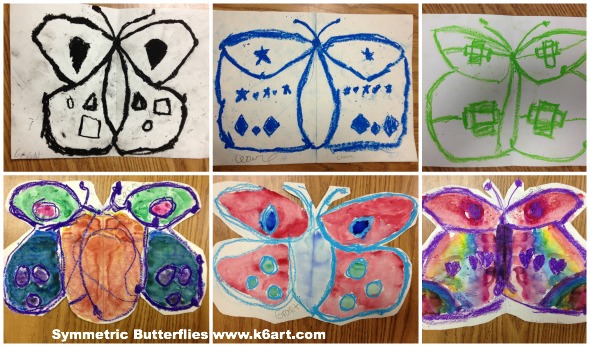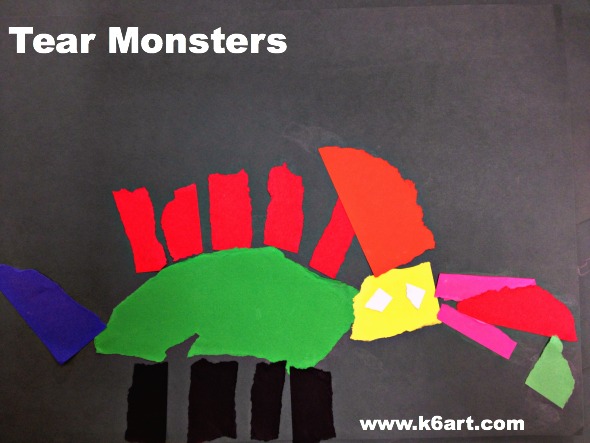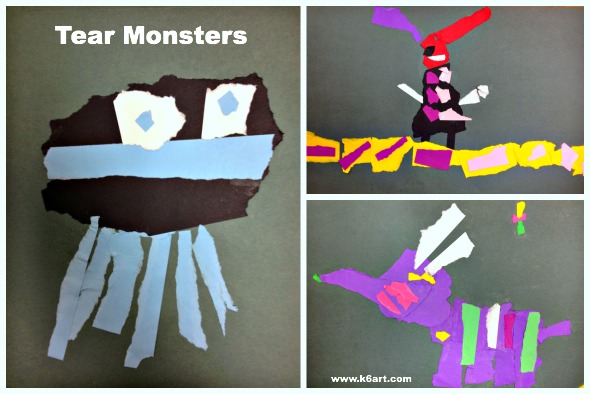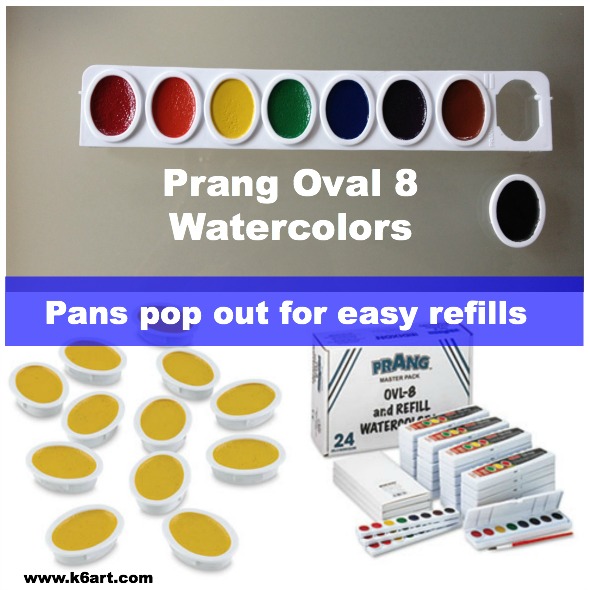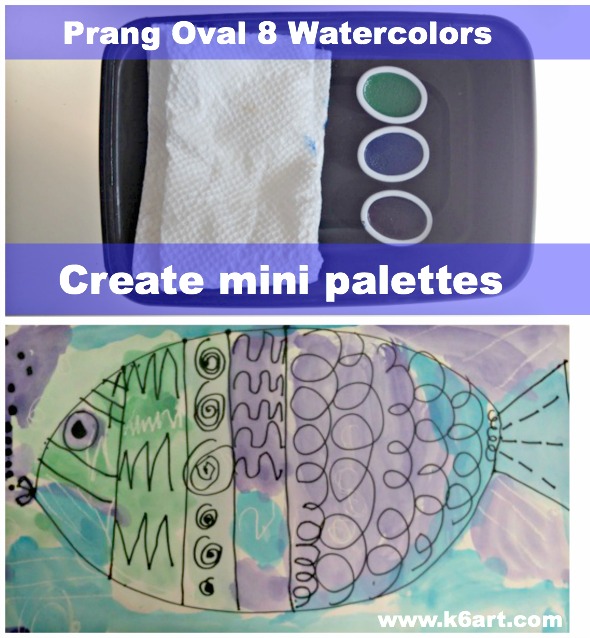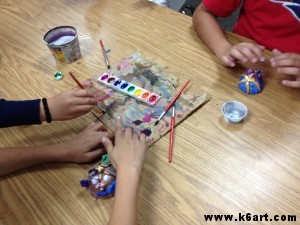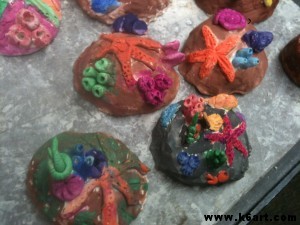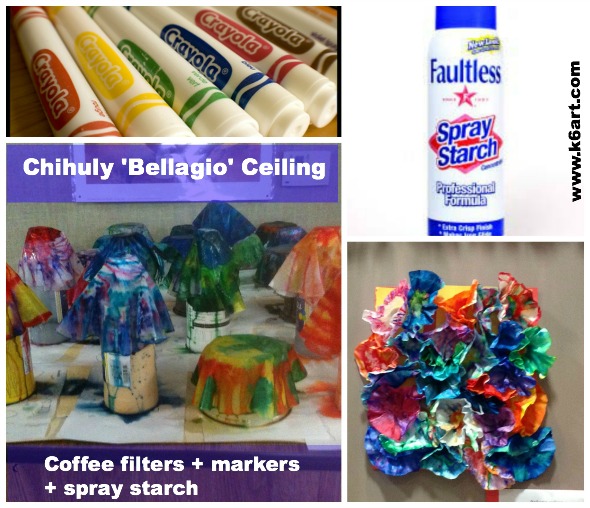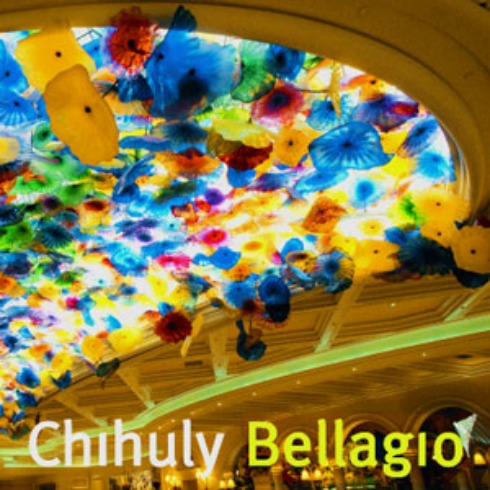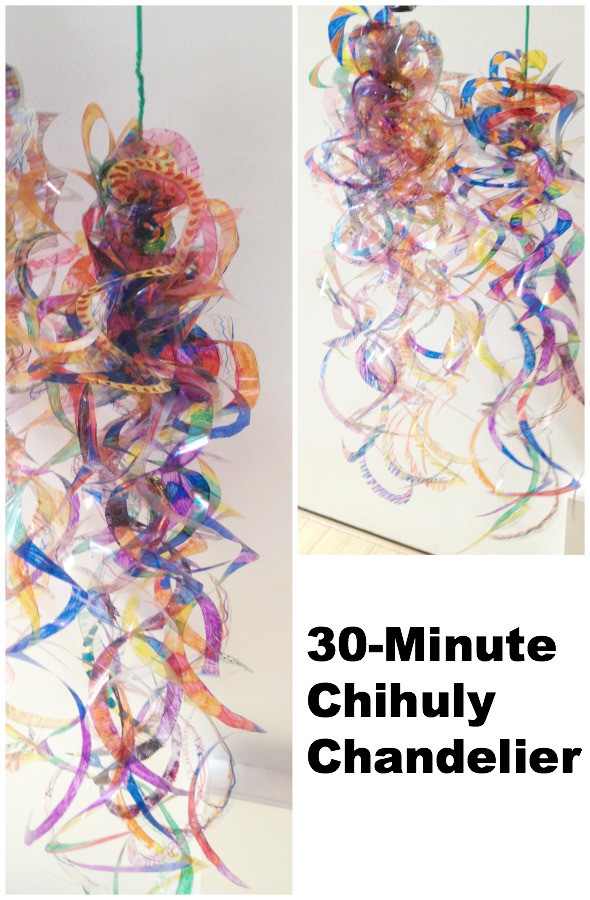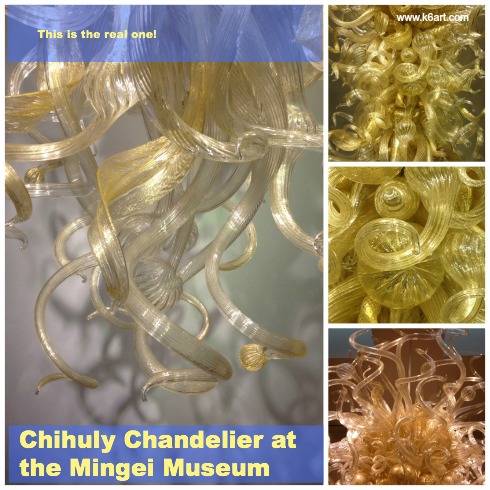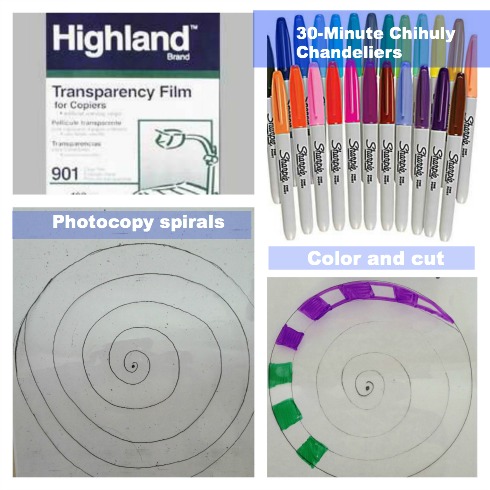Here is a nice butterfly watercolor resist project that teaches symmetry. It was very popular with the kindergarteners and first graders.
Materials:
- white paper, 9″x12″
- oil pastels in bright or dark colors (NO yellow, light pink, light blue, white, etc.)
- rubbing tool – optional (I use the flat side of a beginner pencil)
- watercolors
- Optional: scissors, glue stick and colored paper for mounting
Discuss symmetry
Introduce symmetry. We talk about how our faces are symmetric. Then we look at butterflies and identify the line of symmetry.
Create 1/2 butterflies:
Students fold paper in half ‘the short way’ (aka hamburger fold). Do not unfold paper. Using oil pastel, direct students to create a series of dots on ONE folded half. The students then connect the dots to make a 1/2 butterfly.
Now ask students to trace their lines two more times using that same oil pastel. Students should press hard – oil pastel lines should be thick and dark.
Students can add some simple decorations such as shapes and lines to their 1/2 butterflies. Remember, each decoration must be traced a total of three times.
Ready to rub:
Now students close up their papers so the color is on the inside of their ‘books’. Time to rub HARD. I have students stand up so they can put their whole bodies into it! We use the flat side of a beginner pencil for this. You could use the flat side of a popsicle stick as well.
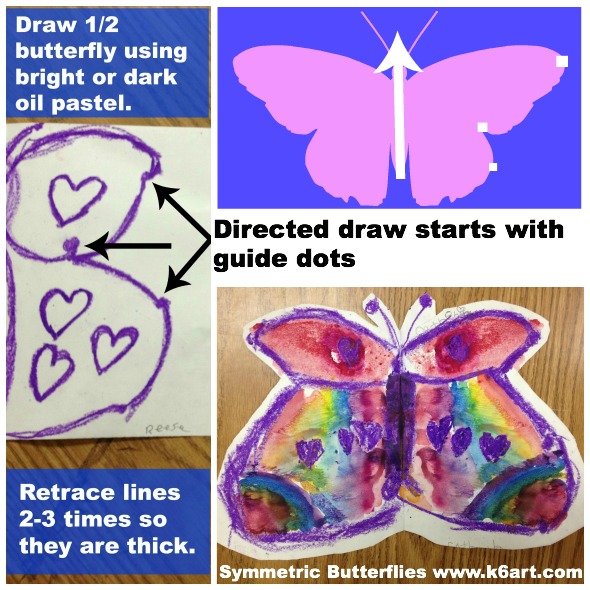
Now open the ‘book’. Students should see a ‘ghost’ image (faint lines) opposite their oil pastel drawing. You will hear oohs and aahs of amazement!
About 75% see the ghost image the first time they try this. If the oil pastel didn’t transfer, it means a) the students didn’t retrace their lines hard enough and/or 3)the students didn’t rub hard enough. I ask neighbors to help their friends out at this point. On their second try, the remaining students all succeeded.
The next step is to retrace the ghost lines with that same color of oil pastel.
Paint
Finally, paint the butterflies with watercolor. Encourage students to keep their butterflies symmetric – match up the paint colors on the right and left sides of the line of symmetry.
Kindergarten and first grade results
Options for finishing the project: cut out the butterflies, mount on construction paper. Or just trim and stick onto your window or bulletin board.
Enjoy!

